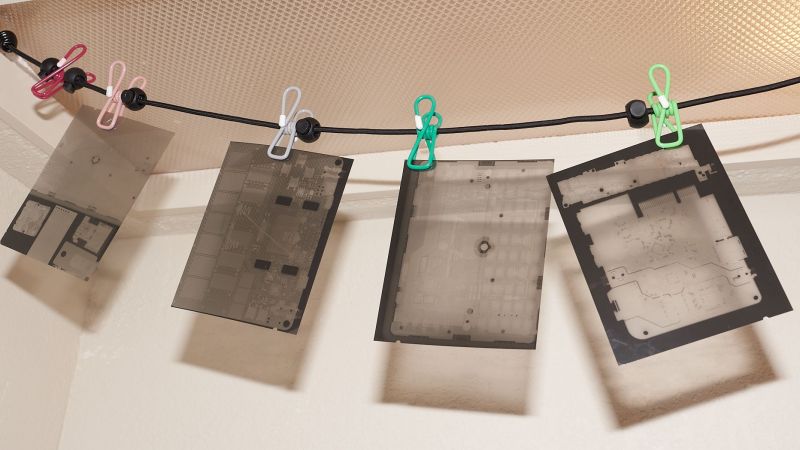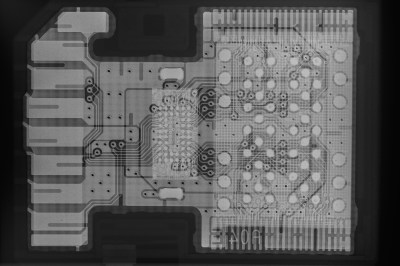
In the same way that a doctor often needs to take a non-destructive look inside a patient to diagnose a problem, those who seek to reverse engineer electronic systems can greatly benefit from the power of X-ray vision. The trouble is that X-ray cabinets designed for electronics are hideously expensive, even on the secondary market. Unless, of course, their sensors are kaput, in which case they’re not of much use. Or are they?
[Aleksandar Nikolic] and [Travis Goodspeed] strongly disagree, to the point that they dedicated a lot of work documenting how they capture X-ray images on plain old analog film. Of course, this is nothing new — [Wilhelm Konrad Roentgen] showed that photographic emulsions are sensitive to “X-light” all the way back in the 1890s, and film was the de facto image sensor for radiography up until the turn of this century. But CMOS sensors have muscled their way into film’s turf, to the point where traditional silver nitrate emulsions and wet processing of radiographic films, clinical and otherwise, are nearly things of the past.

Luckily, though, [Aleksandar] and [Travis] happened upon a small X-ray cabinet whose sensor had given up the ghost, forcing them to improvise. The first pass was with plain black-and-white film, Ilford Ortho Plus to be precise. The 4×5 format film was just the right size to substitute for the wonky image sensor, and at ISO 80 was fine-grained enough to capture the details needed for reverse engineering. After 3D-printing some film holders — PETG proved to be more radiolucent than PLA for some reason — they took some long exposures of various devices in their X-ray cabinet.
The film was processed with the standard chemicals, and the results were pretty fantastic. For those opposed to the wet work, they also tried using instant film packs like those used in Polaroid and Fuji Instax cameras. After removing a single piece of film from a pack inside a dark bag and sensitizing it with a quick flash of visible light, they were able to expose the film and re-insert it into an empty film pack. Slapping the pack back in the instant camera ejects the film, squeezing out the chemical and developing the picture. Et voilà, instant X-rays.
We’ve got to say that this is pretty fantastic work, and we love that this perhaps makes a valuable reverse engineering tool a little more accessible to the average hacker. [Aleksandar] and [Travis] presented this work at Schmoocon a couple of weeks back; the entire track of talks was streamed live, but luckily their talk is at the very beginning of the long video below.
Thanks to [FuzzyAleks] for the tip
0 Commentaires